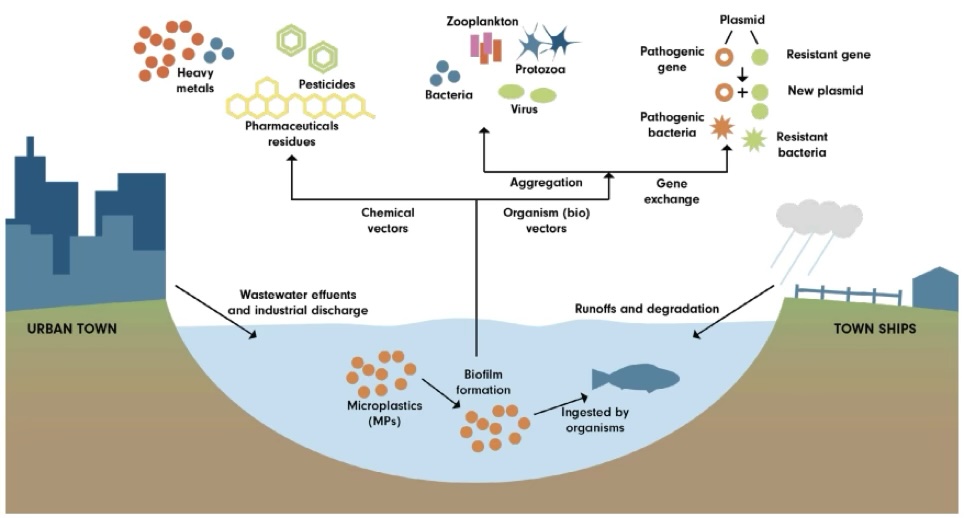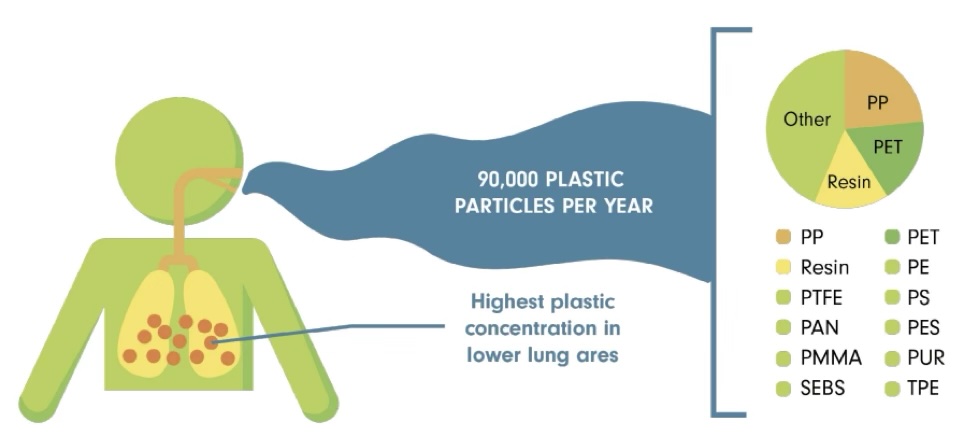In recent years, concerns about micro-plastics in our environment have escalated. From the air we breathe to the food we eat, these tiny plastic particles have found their way into nearly every corner of our lives — including the water we drink. Safe Piping Matters’ latest report, ‘Plastic Pipes, Micro-plastics & Impacts on Human Health’ sheds light on how plastic pipes contribute to micro-plastic contamination in drinking water systems, raising significant concerns for the construction and plumbing industries.
What Are Micro-plastics?
Micro-plastics are tiny plastic fragments, ranging in size from 0.1 microns to 5 millimetres in diameter. Even smaller particles, known as nano-plastics, are less than 0.1 microns.
These particles primarily come from plastic pollution in the environment. Once inside our bodies, typically through ingestion or inhalation, micro-plastics can cause inflammation, cell damage, and potentially serious health issues.
Why Should the Construction Industry Care?
Research shows that plastic pipes used in water systems can release micro-plastics into drinking water, contaminating the water supply. Beyond micro-plastics, plastic pipes have also been found to leach chemicals and volatile organic compounds (VOCs) into water.
The construction and plumbing industries must learn from past mistakes, such as the lead contamination crises, and take proactive steps to ensure safe, sustainable practices in water infrastructure.
How Do Micro-plastics Enter Drinking Water?
Plastic pipes deteriorate over time due to chemical, physical, and microbial factors. A study by Polish researchers revealed that both PVC and PE pipes can develop microscopic pits and tears, shedding plastic particles into water within as little as four years.
Once ingested, these particles don’t simply pass through the body. Studies have found micro-plastics in human blood and breast milk, and they can even cross the blood-brain barrier.
Health Impacts of Micro-plastics
Micro-plastics pose a dual threat:
– Physical Damage: Their sharp, tiny structure can irritate tissues and amplify inflammation.
– Chemical Risks: Micro-plastics attract harmful chemicals, heavy metals, and pathogens, compounding their potential to cause diseases such as cancer and infertility.
These risks are still being studied, but the evidence so far underscores the urgent need for preventive action.
Environmental Consequences
Micro-plastics don’t just affect humans — they’re everywhere, from the deepest oceans to the highest mountaintops. Their impact on air, water, and soil chemistry threatens ecosystems, plants, and animals, disrupting the natural balance of our planet.
What Can Professionals Do to Reduce Risks?
1. Choose Safer Materials
Transitioning away from plastic pipes in favour of alternatives like copper can significantly reduce micro-plastic contamination. Copper is a natural material that doesn’t leach harmful chemicals and has anti-bacterial properties, making it a safer, more sustainable option.
2. Install Filtration Systems
For projects where plastic pipes are unavoidable, incorporating filtration systems can mitigate risks. Options such as ceramic filters, reverse osmosis, and advanced carbon filters can help remove micro-plastics from drinking water. Regular maintenance is essential to keep these systems effective.
3. Educate and Advocate
Raising awareness about the dangers of micro-plastics among construction and plumbing professionals is crucial. By championing safer materials and methods, the industry can lead the way in protecting public health and the environment.
Building a Safer Future
The findings in Safe Piping Matters’ report are a wake-up call for the construction and plumbing industries. As we continue to understand the full implications of micro-plastics on human health and the environment, it’s clear that a shift toward safer, more sustainable materials is not just beneficial — it’s necessary.
Let’s build with the future in mind, ensuring clean, safe drinking water for generations to come.
https://www.safepipingmatters.org/plastic-pipes-micro-plastics-impacts-on-human-health
This report highlights the importance of rethinking current practices in plumbing and construction, urging a shift toward safer, more sustainable materials to protect both human health and the environment.



